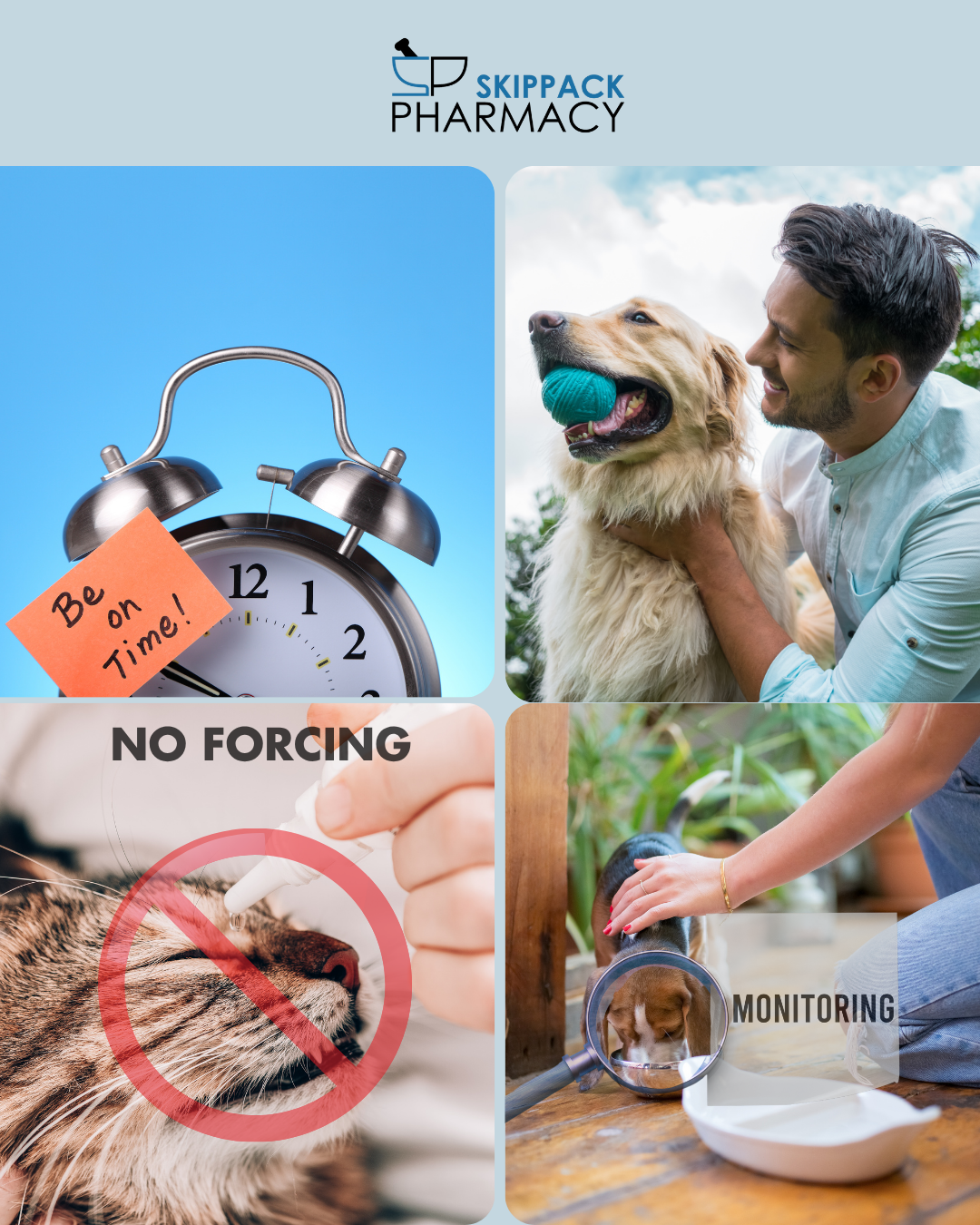
- Uncategorized
-
by Skippack Pharmacy
Understanding the Importance of Eye Drop Compliance
Ocular medications are often prescribed for infections, inflammation, or chronic eye diseases, and must be given consistently for the treatment to be effective. Skipping doses or improper application can delay healing or worsen the condition. It’s important for pet owners to understand not just how often to give the drops, but also how to apply them correctly to maximize absorption and comfort.
Prepare Before You Begin
The first step is preparation. Gather everything you need—the medication, tissues or a clean cloth, and possibly treats—before bringing your pet over. Wash your hands thoroughly and read the label to confirm the dosage and frequency. If your pet is anxious or squirmy, it may be helpful to have a second person gently hold them, or to use a towel to create a snug “purrito” for cats or smaller dogs. This helps restrict movement while keeping the pet comfortable and secure.
The Proper Technique: Calm and Controlled
When you’re ready to apply the drops, approach your pet calmly and confidently. Speak softly and offer gentle reassurance. Gently tilt your pet’s head back and use your non-dominant hand to lift the upper eyelid. Hold the eye drop bottle in your dominant hand, keeping your fingers a few inches above the eye—never touching the eye or lashes, as this can cause contamination or injury. Squeeze the prescribed number of drops onto the surface of the eye. If your pet blinks or shakes their head, don’t worry—a well-aimed drop will still be absorbed even if it doesn’t stay on the eye for long. Try to reward your pet immediately afterward with a treat or praise to build positive associations.
Tips for Success
- Stay consistent: Administer medication at the same times each day to establish routine.
- Use positive reinforcement: Treats, cuddles, or playtime after each dose can reduce stress over time.
- Stay calm: Your pet can sense your stress. Remaining composed helps them relax.
- Don’t force it: If you’re struggling, take a short break and try again rather than turning it into a battle.
- Watch for signs of irritation: Mild redness or tearing can be normal, but if symptoms worsen, contact your vet.
When to contact your veterinarian
If you have trouble administering the drops despite trying various techniques, or if your pet seems to be in pain, your veterinarian may be able to demonstrate the proper method or suggest alternatives like ophthalmic ointments or compounded formulations. In some cases, long-acting medications may be an option for pets that are especially difficult to medicate.
Making Eye Care Easier for Everyone
Administering eye drops doesn’t have to be a struggle. With the right technique, a little patience, and some practice, most pets will adapt well to the process. Education and confidence go a long way in making sure your pet receives the care they need—without unnecessary stress for either of you. By turning eye drop time into a calm, reward-based experience, you help protect your pet’s vision and overall comfort—keeping those eyes clear, bright, and healthy.

